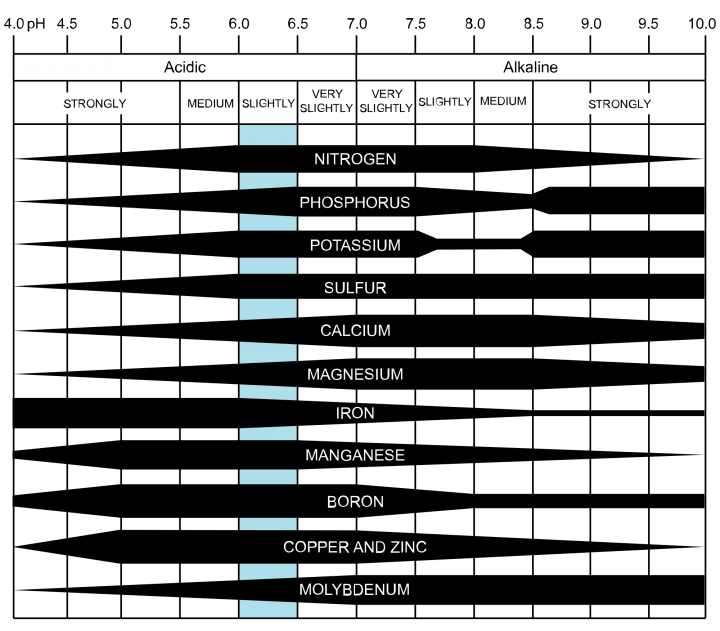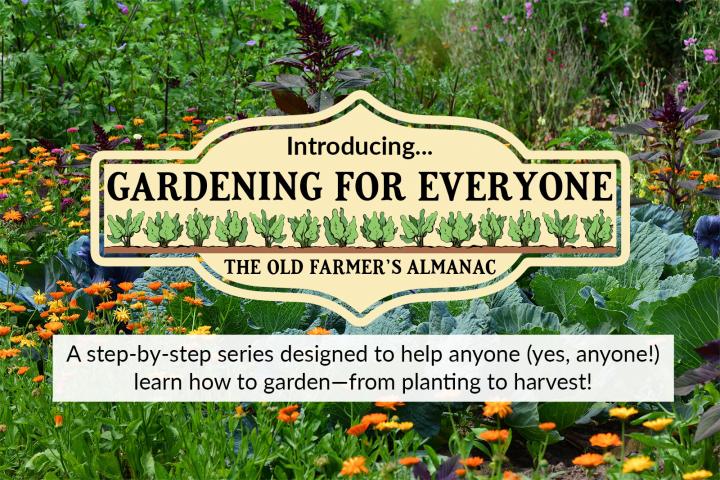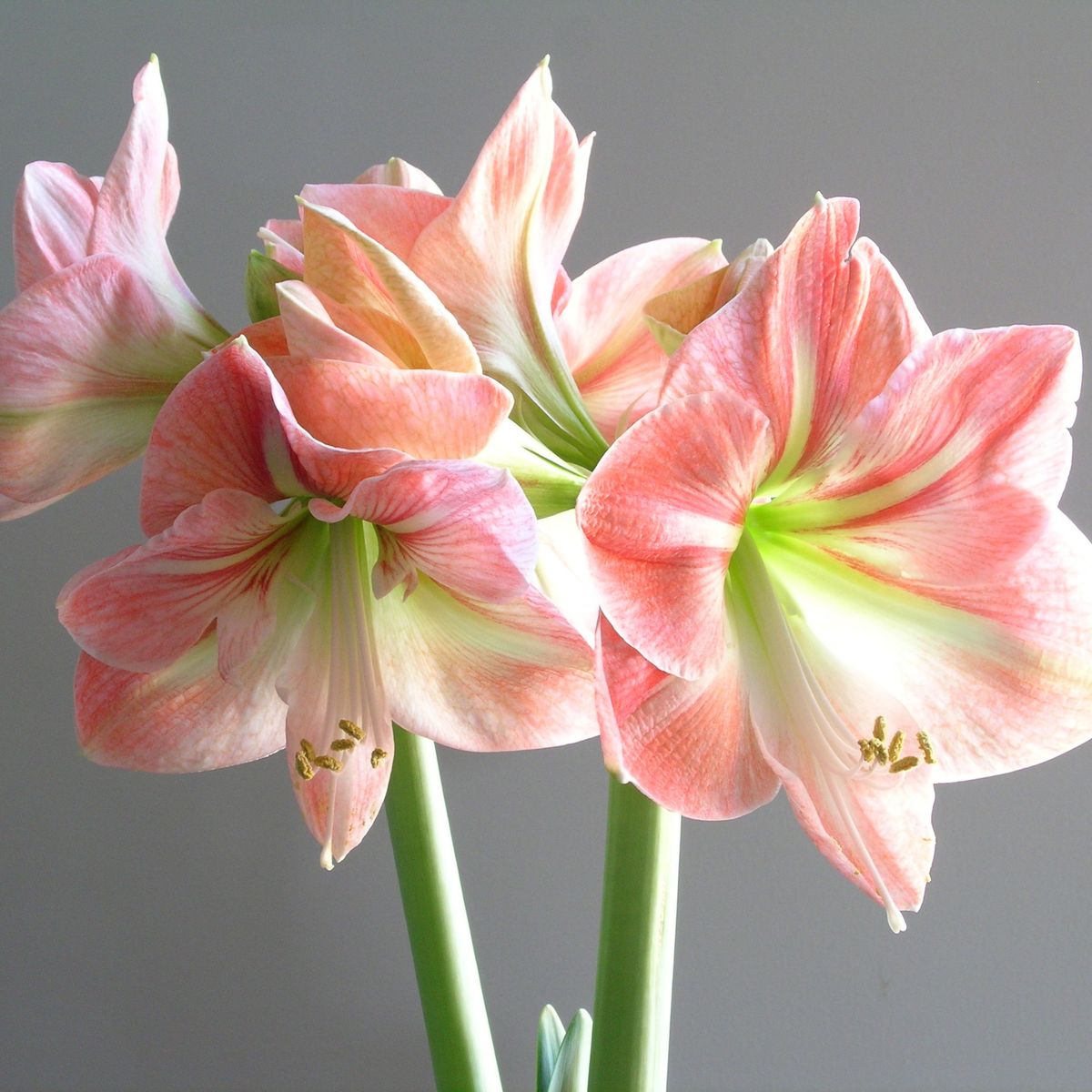It starts with the soil! A gorgeous garden is built on rich, fertile soil. It’s the foundation of your entire garden. How well do you know your garden soil type? Does it drain well or dry out? Let’s get to know YOUR soil and learn how to improve it before planting a garden.
The Most Basic Soil Prep
The last thing we want to do is overwhelm the beginner gardener! While we’re going to really “dig in” to full soil preparation below, understand that it mostly comes down to two things:
- Recognize that gardening is not just putting seeds in the ground. Nothing will grow well without healthy, fertile soil. It’s similar to expecting a baby to grow into a healthy adult without food and water. Good soil not only stabilizes plants and influences how well roots are anchored, but also provides the essential nutrients, water, and air that plants need.
- If all you do is add organic matter such as compost to enrich your soil, that may be enough! Organic matter can take many forms, for example: leafmold made from decomposed leaves, farmyard manure that can be guaranteed to be free of all traces of herbicides, or good old-fashioned garden-made compost.
Once you build a foundation of good, fertile soil, gardening will be “easier” the rest of the year and every year going forward!
Digging Deeper Into Soil
Now let’s talk about the finer aspects of soil preparation. There are three important components of soil:
- Soil Type
- Soil pH
- Soil Nutrition
I. Soil Type
All soil is a mix of 1. rocks that break down over time mixed with 2. organic matter (dead plants and animals) and other microscopic things that plants need to survive.
The rock particles can be either large (sand), medium (silt), or small (clay). These spaces fill with water and air, providing plant roots with oxygen and moisture.
- The size of particles influences how water flows through the soil. Sandy soils do not hold enough water; clay soils hold too much water.
- The size of particles influences potential for compaction. If there is little space (clay), there is little oxygen and air can’t enter the soil.
- Potential for erosion is also an issue. Clay is sticky and sand is heavy, but light silt particles are more prone to erosion.
An ideal soil texture consists of equal parts of sand, silt, and clay; this type of soil is referred to as “loam” or “loamy.”
Good garden soil crumble easily. It will not form a hard ball when squeezed nor crack or crust over when dry.
How do you find out how much sand, silt, or clay is in your soil?
- The simplest and most generic method is the feel test; rub a moist sample of soil between your fingers. Sand will feel gritty, silt smooth, and clay sticky.
- Another test is the ribbon test; with this test, squeeze a small, moistened ball of soil between your thumb and forefinger to create a ribbon. Sand or sandy soils won’t ribbon; loam, silt, silty clay loam, or clay loam soil ribbons less than 1 inch; sandy clay loam, silty clay loam, or clay loam ribbons 1 to 2 inches; and sandy clay, silty clay, or clay will ribbon more than 2 inches.
- There are other tests you can do at home such as the jar test.
II. Soil pH
In addition to soil texture, knowing your soil pH is one of the most important ways of knowing what you can grow. Soil pH is a measure of acidity or alkalinity expressed as a value from 0 to 14, with 0 being most acidic, 14 being most alkaline, and 7 being neutral.
A pH ranging from 6.0 to 7.0 is ideal for most garden vegetables. Generally, soil pH doesn’t reach the upper and lower limits of the pH scale; most garden soils will fall somewhere between 5 and 9 on the scale.
Soil pH affects plants’ growth because it affects the availability of nutrients and minerals in the soil, as well as how well a plant can absorb and regulate these materials. A very high or very low soil pH will result in nutrient deficiency or toxicity, leading to poor plant growth.
Availability of Nutrients at Varying pH Values

This chart shows the availability of nutrients at different pH levels. Slightly acidic soil (6.0–6.5 pH) is best for most plants. Image by CoolKoom/Wikimedia.
How do you find out your soil pH?
Soil pH and nutrient availability can be assessed through a soil sample which you send to a soil testing lab.
There are a few ways to get a soil test.
- Buy an inexpensive soil test kit at your local garden store. Or, you could contact your local cooperative extension service office for a soil test (usually provided for free or a small fee).
- Or, you could try one of these 3 simple DIY soil tests.
See our article on how to take a soil sample and get a soil test.
III. Soil Nutrition
The soil test will also provide information about the level of nutrients available. Depending on the soil test you choose, Phosphorus, Potassium, Magnesium, and Calcium are the most common nutrients you will receive information about.
To quicky review, plants’ primary nutrients are nitrogen (N), phosphorus (P), and potassium (K). On the package of a fertilizer, you’ll see these three values separated by dashes (N-P-K); the numbers of each nutrient indicate the percentage of net weight contained.
- Nitrogen (N) promotes strong leaf and stem growth and a dark green color, such as desired in broccoli, cabbage, greens and lettuce, and herbs. Add aged manure to the soil and apply alfalfa meal or seaweed, fish, or blood meal to increase available nitrogen.
- Phosphorus (P) promotes root and early plant growth, including setting blossoms and developing fruit, and seed formation; it’s important for cucumbers, peppers, squash, tomatoes—any edible that develops after a flower has been pollinated. Add (fast-acting) bonemeal or (slow-release) rock phosphate to increase phosphorus.
- Potassium (K) promotes plant root vigor, disease and stress resistance, and enhances flavor; it’s vital for carrots, radishes, turnips, and onions and garlic. Add greensand, wood ashes, gypsum, or kelp to increase potassium.
Learn more about NPK Ratio: What Do Those Numbers Mean?
How to Improve Your Soil
So, what will your soil test tell you?
Soil Nutrition
First, you’ll find out which nutrients your soil is lacking (or not!). You may find, for example, your test indicates that your soil needs more potassium but absolutely no additional phosphorus. Your test will also make recommendations on the other nutrients (calcium, magnesium, boron, etc.). Nutrients can be added to soil in many different forms with the most common forms being manure, compost, or commercial fertilizers. Applications of amendments will be recommended by your soil test results.
Soil pH
You’ll also find out if your soil pH is within the ideal range of 6.0–6.5. For example, perhaps your soil is too acidic for cabbage. Your soil test results will make recommendations to adjust your soil pH.
- To raise soil pH (more alkaline), add lime (pulverized limestone) or wood ash.
- To lower soil pH (more acidic), add elemental sulfur in fall or early spring. (Exception is soil high in limestone.)
Raising and lowering your pH does take time; once lime or sulfur is applied, it can take a year or more to see any movement in pH. Remember, you do not have to change your soil pH if you grow plants that tolerate the current pH of your soil. And never assume that you should add lime, sulfur, wood ash, or other amendments. For example, you don’t want to make already alkaline soil even more alkaline with wood ash.
Soil Amendments
Remember that your soil type and texture plays a big factor in the success of your garden, too. Almost all garden soils can be improved by adding organic matter to make soil more workable. Organic matter:
- Loosens tight clay and helps sand hold more water
- Makes soil easier to dig
- Moves soil pH towards a level ideal for most fruits and vegetables
- Adds nutrients
Some common organic matter additives are:
- Plant materials: leaves, straw, and grass clippings. Work material into the soil several months before planting to allow it time to decompose. Most gardeners do this during the winter.
- Bark, ground: made from various tree barks. Improves soil structure.
- Compost: decayed plant materials. Work it into the soil before planting. Excellent soil conditioner that adds nutrients. May also lower soil pH.
- Leaf mold: decomposed leaves that add nutrients and structure to soil.
- Lime: raises the pH of acidic soil and helps to loosen clay soil.
- Manure: good conditioner. Use composted manure and incorporate it into the soil well ahead of planting. Do not use fresh manure, as it can damage plants and introduce diseases. Apply 30 to 40 pounds of composted manure for every 100 square feet.
- Green manure: plant rye or oats in the fall and plow or spade it under in the spring. These cannot be used if a fall garden is planted.
- Peat moss: conditioner that helps soil retain water and can lower soil pH.
- Sawdust: Compost this before adding it to the garden. Do not use uncomposted sawdust because it will rob the soil of nitrogen and, consequently, starve the plants of this essential nutrient.
- Topsoil: usually used with another amendment. Replaces existing soil.
When we think about different soil types, consider:
- Sandy soils consists of large particles and drains quickly. Sand does not hold onto nutrients very well but warms up quickly in spring. Root crops, onions and asparagus will all grow well in sandy soil. Or, to amend sandy soil to grow other vegetables, add humus or aged manure, peat moss, or sawdust with some extra nitrogen.
- Silt soils have smaller particles than sandy soils, giving them a slightly slippery, floury feel. This type of soil holds onto moisture and nutrients for longer. If you have silt soil, add coarse sand (not fine beach sand), pea gravel and compost, or well-rotted horse manure mixed with fresh straw.
- Clay (or heavy) soils consist of very fine particles. Clay soil holds its shape when rolled into a ball. It is slow both to absorb moisture and to drain, which means soils like this can bake hard in summer then become waterlogged in winter. Well-cultivated clay soils are preferred by brassicas such as cabbage, as well as beans, peas and leafy crops like salads. To amend clay soil, add gypsum to the soil over the fall or winter and let it work itself in. Add compost to make it more workable. Mix 3 inches of organic matter, such as leaves, with the soil. Do this during the winter, as long as the ground isn’t frozen. Contrary to popular belief, amending clay soil with sand will only result in tough, compacted soil.
- Loam is the ideal soil type for growing fruits and vegetables. It’s fertile, drains well, is easy to work and contains plenty of organic matter that supports just about any crop.
How to Add Organic Matter
To add organic matter to your soil, pour enough on your ground in the fall in order to spread to a depth of a least two inches. Do not add more than a 4-inch layer.
Add organic matter each year during soil preparation to build and maintain the soil. Be sure all plant material is turned under the soil. If organic material is added before planting a fall garden, it should be well-rotted, such as compost.
Before planting, rake the soil clean and level it. Remove all sticks, rocks and other material.
Note: Add the soil when it’s moist but not wet. Working soil when it’s too wet can damage soil structure. Clay soil is especially susceptible to damage and compaction; wait until the soil is dry enough to work. Take a handful of soil from a depth of about 6 inches and squeeze it in your hand to form a ball. If the soil crumbles through your fingers, then it is dry enough to work. If the soil forms a ball that falls apart on its own or when you press it with your thumb, then the soil is dry enough to work. However, if the ball retains its shape or your thumb just leaves an indepentation, the soil is too wet to work. Wait a few days and check the soil agan.
Of course, be careful working dry soil, too. It’s best to water well and then check the soil moisture as described above. By the spring, worms will have done a great job of incorporating most of that organic matter into the soil. Any remaining on the surface can always be forked in a few weeks before it’s time to sow or plant.
Spade the soil in the winter to prepare for spring planting. Winter temperatures and moisture help mellow soil. This is especially important if the soil is being worked for the first time.
Before planting, rake the soil clean and level it. Remove all sticks, rocks and other material. Now you’ll be ready to plant in raised beds, raised rows, or traditional rows!
Related Content
Got an over-spent or neglected field you want to turn into a garden? Read our article about reclaiming your garden soil.
Free Online Gardening Guides
We’ve gathered all of our best beginner gardening guides into a step-by-step series designed to help you learn how to garden! Visit our complete Gardening for Everyone hub, where you’ll find a series of guides—all free! From selecting the right gardening spot to choosing the best vegetables to grow, our Almanac gardening experts are excited to teach gardening to everyone—whether it’s your 1st or 40th garden.











